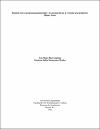Mostrar el registro resumido del documento
Relación entre el programa arquitectónico y la escenografía en la vivienda rural productiva (Bogotá Usme)
| dc.contributor.advisor | Jaramillo-Acosta, Laura Marcela |
| dc.creator | Diaz-Guatame, Luis Mateo |
| dc.creator | Montenegro-Méndez, Robinson Julián |
| dc.date.accessioned | 2023-09-20T12:27:30Z |
| dc.date.available | 2023-09-20T12:27:30Z |
| dc.date.created | 2022-06-21 |
| dc.identifier.uri | http://repositorio.uniagustiniana.edu.co/handle/123456789/2280 |
| dc.description | El presente trabajo de investigación abarca la relación entre programa y escenografía como articulador para transformar la vivienda rural productiva en la vereda la Requilina, en Usme, Bogotá; partimos de la escasez de relación en la escenografía propia de los espacios de la vivienda y la misma distribución del programa en estas, debido a que esto limita la mixtura en las actividades diarias no provistas en los mismos espacios que se esperan sean cambiantes. De acuerdo a lo anterior se reconocen los espacios de la vivienda y sus distintos tipos de actividad relacionándolos con las escenografía de loa espacios, realizamos un estudio buscando las relaciones más tangibles con respecto a programa y escenografía, teniendo en cuenta que son viviendas rurales las cuales un 70% son producción y un 30% de espacios habitables como actividad principal en el sector rural debido al agroturismo, encontrando esto en todas las viviendas de la ruta agroturística en la vereda donde lo que genera un cambio es las actividades internas y externas de algunas viviendas. Todo lo anterior se rige por la metodología mixta con la cual nos regimos para el desarrollo de la investigación donde habrán tres etapas para recopilar agrupar y concluir este proceso, con la recopilación de esta información concluimos que nos permite evidenciar un claro planteamiento de viviendas replicables estándar, polivalentes y flexibles en donde los espacios se adaptaran al tipo de actividad que se piense realizar, ya sea con rotaciones a través de tabiques móviles que harán parte de la estructura a través de rieles transformando el espacio según la necesidad, esto como un proceso recopilatorio de información que nos permitió concluir lo siguiente, la mayoría de viviendas rurales están adaptadas más a la actividad agrícola que aun lugar habitable, son prácticas en su distribución de actividades haciendo énfasis en la unión de algunos espacios, a pesar de todo suplen sus necesidades pero necesitan una mejor visión espacial para la distribución del mismo, con esto en mente la escenografía se adaptara al espacio y el sistema de distribución será de forma más consciente y programática para la identidad de los mismos espacios en donde todos podrán interactuar libremente en cada espacio ya sea dentro de la vivienda o en los perímetros cercanos a esta con sus respectivas actividades para ser parte del colectivo social ya establecido en las rutas turísticas del sector. |
| dc.description.abstract | The present research work covers the relationship between program and scenography as an articulator to transform productive rural housing in the village of La Requilina, in Usme, Bogota; we start from the scarcity of relationship in the scenography of the housing spaces and the same distribution of the program in these, because this limits the mixture in the daily activities not provided in the same spaces that are expected to be changing. According to the above, the housing spaces and their different types of activities are recognized and related to the scenography of the spaces, we conducted a study looking for the most tangible relationships with respect to program and scenography, taking into account that they are rural houses which 70% are production and 30% of living spaces as the main activity in the rural sector due to agrotourism, finding this in all the houses of the agrotourism route in the village where what generates a change is the internal and external activities of some houses. All the above is governed by the mixed methodology with which we are governed for the development of the research where there will be three stages to compile, group and conclude this process, with the collection of this information we conclude that it allows us to evidence a clear approach of standard replicable houses, polyvalent and flexible where the spaces will be adapted to the type of activity to be carried out, either with rotations through movable partitions that will be part of the structure through rails transforming the space according to the need, this as a process of information gathering that allowed us to conclude the following, the majority of rural houses are adapted more to the agricultural activity than to a habitable place, they are practical in their distribution of activities making emphasis in the union of some spaces, in spite of everything they supply their necessities but they need a better spatial vision for the distribution of the same one, With this in mind the scenography will be adapted to the space and the distribution system will be more conscious and programmatic for the identity of the same spaces where everyone can interact freely in each space either inside the house or in the perimeters near it with their respective activities to be part of the social collective already established in the tourist routes of the sector. |
| dc.format.mimetype | application/pdf |
| dc.language.iso | spa |
| dc.source | instname:Universitaria Agustiniana |
| dc.source | reponame:Repositorio Institucional UniARI |
| dc.subject | Vivienda rural |
| dc.subject | Actividad |
| dc.subject | Arquitectura sostenible |
| dc.subject | Escenografía |
| dc.subject | Programa arquitectónico |
| dc.subject | Agroturismo |
| dc.title | Relación entre el programa arquitectónico y la escenografía en la vivienda rural productiva (Bogotá Usme) |
| dc.type | info:eu-repo/semantics/bachelorThesis |
| dc.rights.accesRights | info:eu-repo/semantics/restrictedAccess |
| dc.rights.acceso | Restringido (Temporalmente bloqueado) |
| dc.subject.keyword | Rural housing |
| dc.subject.keyword | Activity |
| dc.subject.keyword | Sustainable architecture |
| dc.subject.keyword | Scenography |
| dc.subject.keyword | Architectural program |
| dc.subject.keyword | Agrotourism |
| dc.type.hasVersion | info:eu-repo/semantics/acceptedVersion |

